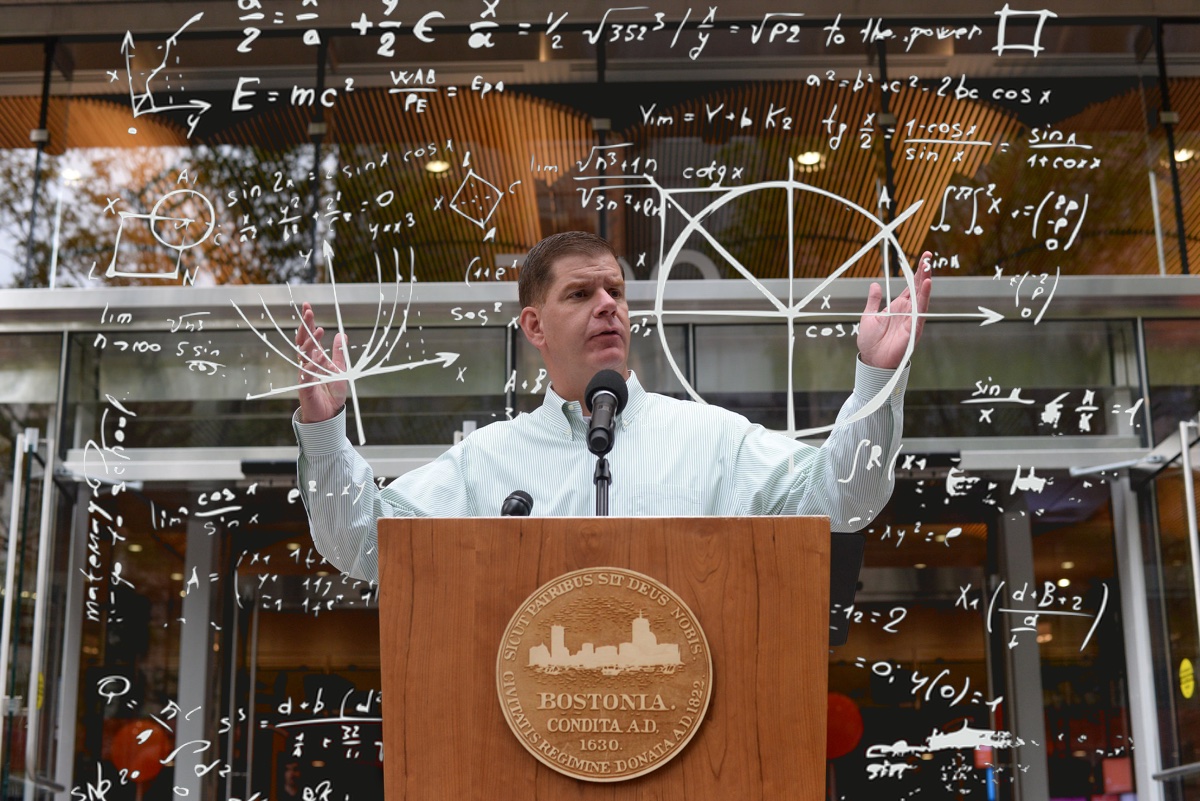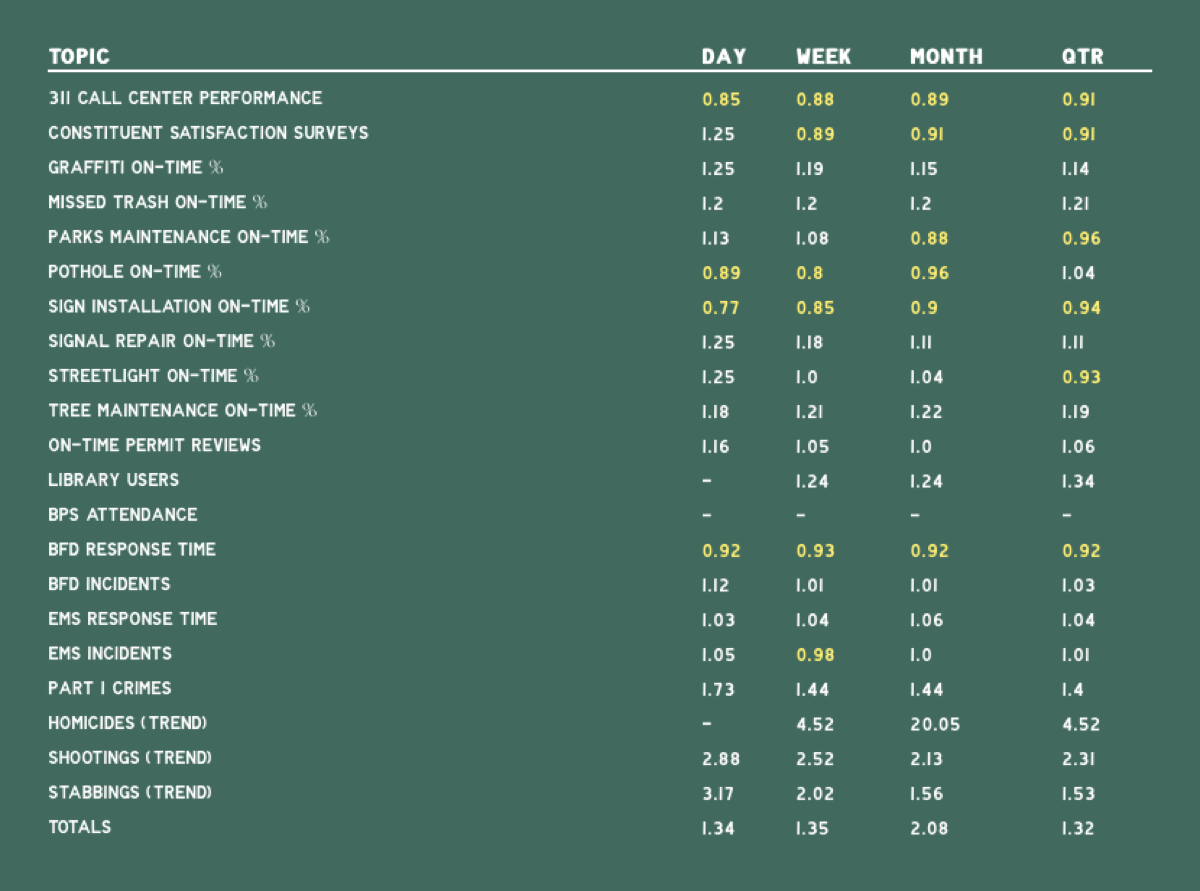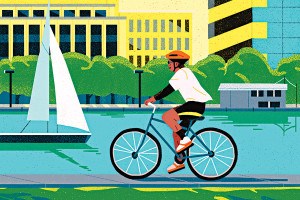What Ever Happened to CityScore?

Walsh photo via Mayor’s Office/Jeremiah Robinson, Math illustration via iStock/subjob.
Today’s CityScore is 1.34. Can you feel it?
The Walsh administration launched the program in January. Neatly itemized were the wide-ranging factors of city life, from pothole repairs to stabbings, laid out on a digital scoreboard reminiscent of the one adorning the Green Monster. City sabremetricians funneled these variables into a municipal meat-grinder, and out plopped a single number reflective of the overall performance of government services.
Even before its official launch, the ambitious initiative received national attention, and landed chief of staff Dan Koh his very own TEDx talk, titled “What Government Can Learn From Baseball.” But here in town, Walsh’s civic tinkering has been overshadowed by GE’s high-profile arrival in Fort Point, the ignominious end of IndyCar Boston, racial tension and student walkouts at Boston Public Schools, and the ongoing federal labor probe that’s claimed two of his top aides.
In perhaps his most calamitous eight months in office, the city’s tree pruning metric somehow wasn’t at the center of our attention.
In a presentation to reporters Tuesday announcing the next phase of CityScore, city officials touted the program’s quiet successes. For example, when Walsh noticed that EMS response times were on the rise, dragging down the city’s overall score, he called Chief James Hooley and carved out a spot in the 2017 budget for 10 new ambulances and 20 EMTs.
“I think we learned a lot about efficiency. Using our people better, people who work for the City of Boston are more focused and targeted on their job performance,” Walsh said. “We certainly have a better delivery of services to the city.”
When the Department of Public Works saw a dip in their score every Tuesday, officials discovered that weekend crews were responding to the 311 reports, but lacked the mobile devices needed to close the cases in the field.
“From the mayor’s perspective, this isn’t just about seeing what’s in the red, calling them, and trying to figure out what’s in the red, but also seeing what’s doing really well,” Koh said. “I’ve been in the office many times with mayor when he’s seeing a really good number get up on CityScore, he’ll call a department head and congratulate them for the good work.”
That’s all well and good within the concrete confines of City Hall. But how do you get the average resident to care?

“This is also reflective of constituent experiences with individual situations. This is data that is derived from all of the work that’s being done, requested or being made residents of Boston,” said Jascha Franklin-Hodge, the city’s information chief. “The fact that there’s a positive CityScore for pothole-filling, what that reflects is that when you call and say, ‘Hey, there’s a pothole in front of my house,’ it’s very likely that that’s going to get fixed on-time.”
In the last eight months, Walsh’s analytics team has tweaked CityScore to improve user experience. Its colors have been made compliant Americans with Disabilities Act (ADA) standards for easier reading. Each metric now has a clear definition, and all data fed into the city’s algorithm is available for download on the city’s revamped website.
“There are people who want to see these numbers, and want to see how city services are doing,” Walsh said. “Part of the launch of the new website was trying to get more people engaged. We’ve really focused on our Twitter chats and all that stuff, as far as engaging more people in government.”
Boston has been working with Miami, Providence, and South Bend, Indiana to develop their own versions of CityScore—now a registered trademark—with the publicly available tool-kit on GitHub. Rather than licensing the toolkit to other municipalities, Franklin-Hodge was firm on keeping it open source.
“We think open source offers a model for self-sustaining development,” he says. “We know other cities similar to Boston have technical teams, have analytics teams, and it is our hope that they will come in and make changes, make improvements, commit them back, and we’ll be able to benefit from that. The hope is that there’s a community that builds up around this, and both lowers our cost and also means we benefit from other people’s input.”
And that Fenway Park design scheme? Here to stay, Franklin-Hodge said.


